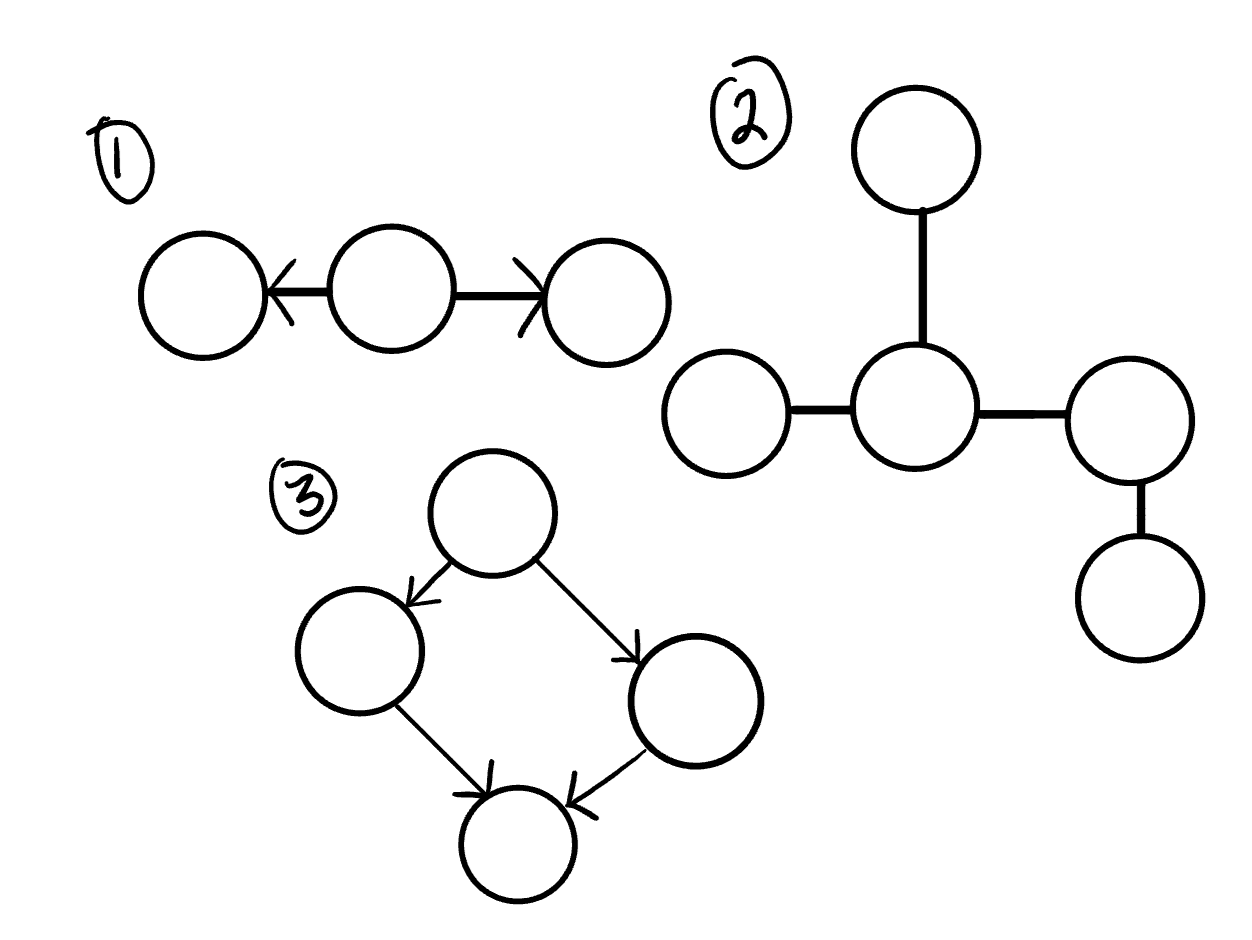reading-notes
Graphs
A graph is a non-linear data structure that can be looked at as a collection of vertices potentially connected by line segments named edges.
Graph Contents:
- Vertex - A vertex, also called a “node”, is a data object that can have zero or more adjacent vertices.
- Edge - An edge is a connection between two nodes.
- Neighbor - The neighbors of a node are its adjacent nodes.
- Degree - The degree of a vertex is the number of edges connected to that vertex.
Directed vs Undirected
Undirected Graph: An Undirected Graph is a graph where each edge is undirected or bi-directional.
The undirected graph we are looking at has 6 vertices and 7 undirected edges.
Undirected graph visual example:
Vertices/Nodes = {a,b,c,d,e,f}
Edges = {(a,c),(a,d),(b,c),(b,f),(c,e),(d,e),(e,f)}
Directed Graphs: A Directed Graph also called a Digraph is a graph where every edge is directed.
Direcyed graph visual example:
Vertices = {a,b,c,d,e,f}
Edges = {(a,c),(b,c),(b,f),(c,e),(d,a),(d,e)(e,c)(e,f)}
Complete vs Connected vs Disconnected
Complete Graphs
A complete graph is when all nodes are connected to all other nodes.
Connected Graphs
A connected graph is graph that has all of vertices/nodes have at least one edge.
Disconnected Graphs
A disconnected graph is a graph where some vertices may not have edges.
Acyclic vs Cyclic Graphs
Acyclic Graph
An acyclic graph is a directed graph without cycles.
A cycle is when a node can be traversed through and potentially end up back at itself.

Cyclic Graphs
A Cyclic graph is a graph that has cycles.
Graph Representation
- Adjacency Matrix
- Adjacency List
Adjacency Matrix
An Adjacency matrix is represented through a 2-dimensional array. If there are n vertices, then we are looking at an n x n Boolean matrix
A few things to note from the above:
- Looking at the graph we are representing, you can see that Vertex A connects to both Vertex D and Vertex C.
- We follow this same pattern for the other vertex’s and where they are connected.
Adjacency List
An adjacency list is the most common way to represent graphs.
Code Implementation:
- We can visually see that we are working with a collection of some sort. The visual is depicting a Linked List, but you could easily make it an array of arrays if you’d like.
- Each index or node (depending on the data structure you choose to represent the adjacency list) will be a vertex within the graph.
- Every time you add an edge, you will find the appropriate vertices in the data structure and add it to the appropriate location.
Weighted Graphs
A weighted graph is a graph with numbers assigned to its edges. These numbers are called weights.
Traversals
Breadth First
In a breadth first traversal, you are starting at a specific vertex/node. This node must be specified when calling the BreadthFirst() method. The breadth-first traversal of a graph is like that of a tree, with the exception that graphs can have cycles.
Algorithm:
- Enqueue the declared start node into the Queue.
- Create a loop that will run while the node still has nodes present.
- Dequeue the first node from the queue
- if the Dequeue‘d node has unvisited child nodes, add the unvisited children to visited set and insert them into the queue.
Pseudo code:
ALGORITHM BreadthFirst(vertex)
DECLARE nodes <-- new List()
DECLARE breadth <-- new Queue()
DECLARE visited <-- new Set()
breadth.Enqueue(vertex)
visited.Add(vertex)
while (breadth is not empty)
DECLARE front <-- breadth.Dequeue()
nodes.Add(front)
for each child in front.Children
if(child is not visited)
visited.Add(child)
breadth.Enqueue(child)
return nodes;
Depth First
In a depth first traversal, we approach it a bit different than the way we do when working with a depth first traversal of a tree.
Algorithm:
- Push the root node into the stack
- Start a while loop while the stack is not empty
- Peek at the top node in the stack
- If the top node has unvisited children, mark the top node as visited, and then Push any unvisited children back into the stack.
- If the top node does not have any unvisited children, Pop that node off the stack
- repeat until the stack is empty.
Graphs Applications
- GPS and Mapping
- Driving Directions
- Social Networks
- Airline Traffic
- Netflix uses graphs for suggestions of products